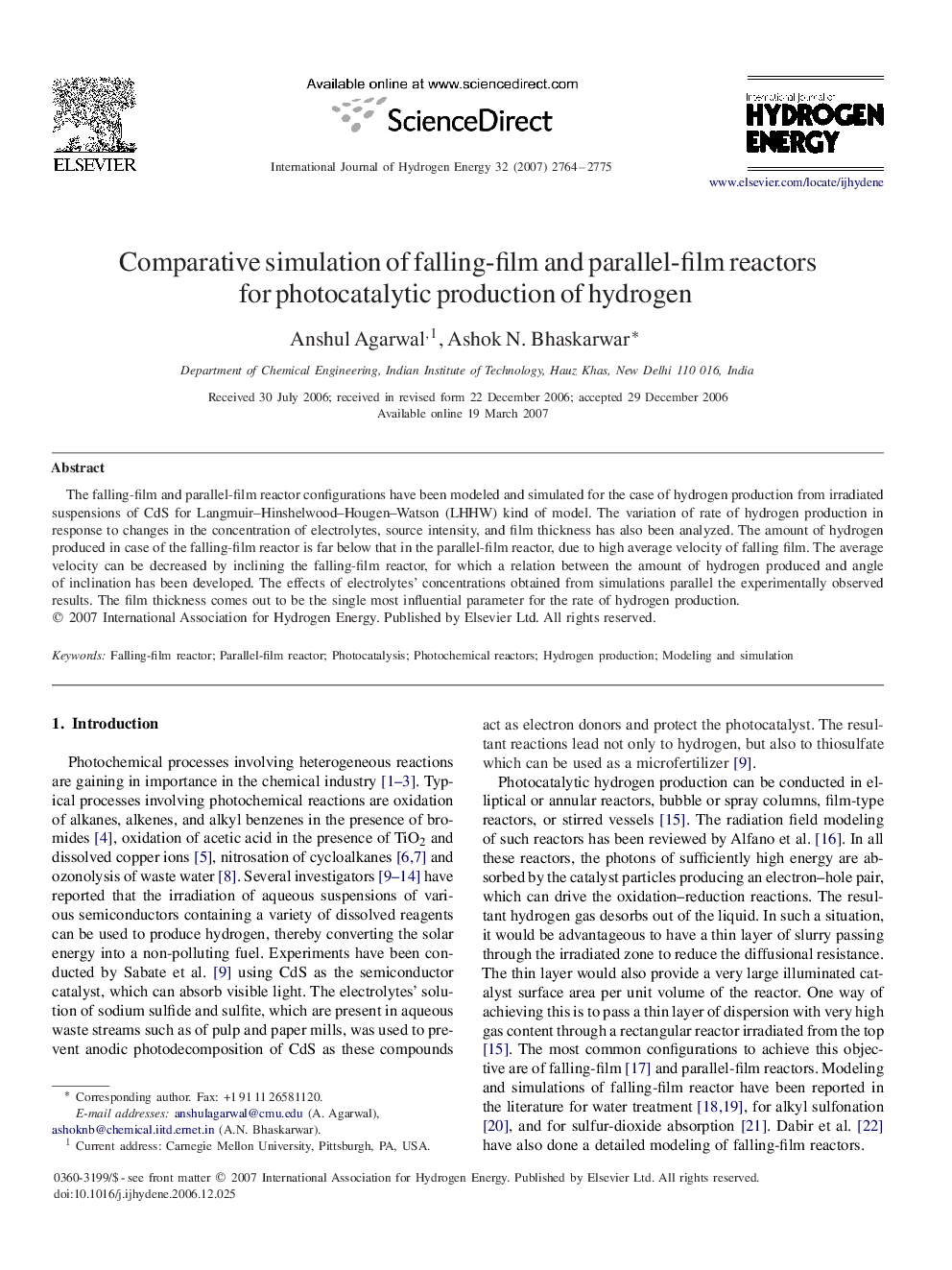| Article ID | Journal | Published Year | Pages | File Type |
|---|---|---|---|---|
| 1280175 | International Journal of Hydrogen Energy | 2007 | 12 Pages |
The falling-film and parallel-film reactor configurations have been modeled and simulated for the case of hydrogen production from irradiated suspensions of CdS for Langmuir–Hinshelwood–Hougen–Watson (LHHW) kind of model. The variation of rate of hydrogen production in response to changes in the concentration of electrolytes, source intensity, and film thickness has also been analyzed. The amount of hydrogen produced in case of the falling-film reactor is far below that in the parallel-film reactor, due to high average velocity of falling film. The average velocity can be decreased by inclining the falling-film reactor, for which a relation between the amount of hydrogen produced and angle of inclination has been developed. The effects of electrolytes’ concentrations obtained from simulations parallel the experimentally observed results. The film thickness comes out to be the single most influential parameter for the rate of hydrogen production.
